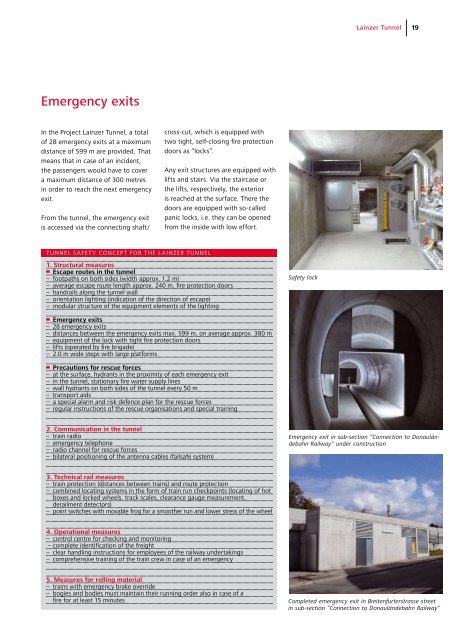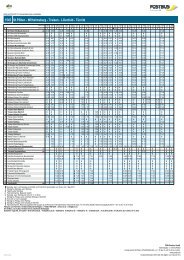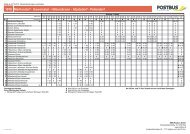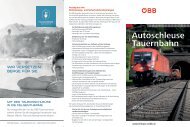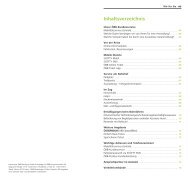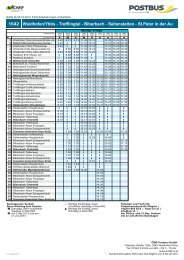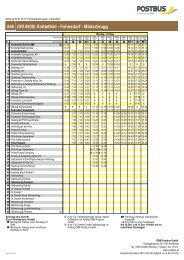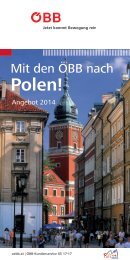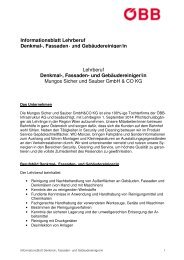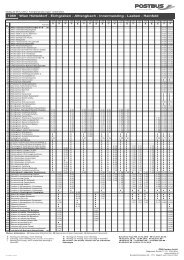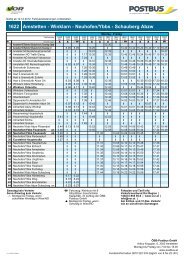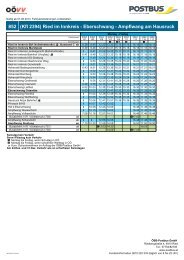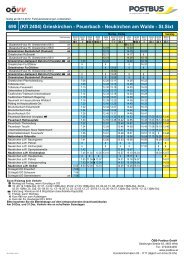Lainzer Tunnel
Lainzer Tunnel
Lainzer Tunnel
Create successful ePaper yourself
Turn your PDF publications into a flip-book with our unique Google optimized e-Paper software.
Emergency exits<br />
In the Project <strong>Lainzer</strong> <strong>Tunnel</strong>, a total<br />
of 28 emergency exits at a maximum<br />
distance of 599 m are provided. That<br />
means that in case of an incident,<br />
the passengers would have to cover<br />
a maximum distance of 300 metres<br />
in order to reach the next emergency<br />
exit.<br />
From the tunnel, the emergency exit<br />
is accessed via the connecting shaft/<br />
TUNNEL SAFETy CONCEPT FOR THE LAINzER TUNNEL<br />
cross-cut, which is equipped with<br />
two tight, self-closing fire protection<br />
doors as “locks”.<br />
Any exit structures are equipped with<br />
lifts and stairs. Via the staircase or<br />
the lifts, respectively, the exterior<br />
is reached at the surface. There the<br />
doors are equipped with so-called<br />
panic locks, i.e. they can be opened<br />
from the inside with low effort.<br />
1. Structural measures<br />
Escape routes in the tunnel<br />
– footpaths on both sides (width approx. 1.2 m)<br />
– average escape route length approx. 240 m, fire protection doors<br />
– handrails along the tunnel wall<br />
– orientation lighting (indication of the direction of escape)<br />
– modular structure of the equipment elements of the lighting<br />
Emergency exits<br />
– 28 emergency exits<br />
– distances between the emergency exits max. 599 m, on average approx. 380 m<br />
– equipment of the lock with tight fire protection doors<br />
– lifts (operated by fire brigade)<br />
– 2.0 m wide steps with large platforms<br />
Precautions for rescue forces<br />
– at the surface, hydrants in the proximity of each emergency exit<br />
– in the tunnel, stationary fire water supply lines<br />
– wall hydrants on both sides of the tunnel every 50 m<br />
– transport aids<br />
– a special alarm and risk defence plan for the rescue forces<br />
– regular instructions of the rescue organisations and special training<br />
2. Communication in the tunnel<br />
– train radio<br />
– emergency telephone<br />
– radio channel for rescue forces<br />
– bilateral positioning of the antenna cables (failsafe system)<br />
3. Technical rail measures<br />
– train protection (distances between trains) and route protection<br />
– combined locating systems in the form of train run checkpoints (locating of hot<br />
boxes and locked wheels, track scales, clearance gauge measurement,<br />
derailment detectors)<br />
– point switches with movable frog for a smoother run and lower stress of the wheel<br />
4. Operational measures<br />
– control centre for checking and monitoring<br />
– complete identification of the freight<br />
– clear handling instructions for employees of the railway undertakings<br />
– comprehensive training of the train crew in case of an emergency<br />
5. Measures for rolling material<br />
– trains with emergency brake override<br />
– bogies and bodies must maintain their running order also in case of a<br />
fire for at least 15 minutes<br />
Safety lock<br />
<strong>Lainzer</strong> <strong>Tunnel</strong> 19<br />
Emergency exit in sub-section ”Connection to Donauländebahn<br />
Railway“ under construction<br />
Completed emergency exit in Breitenfurterstrasse street<br />
in sub-section ”Connection to Donauländebahn Railway“


